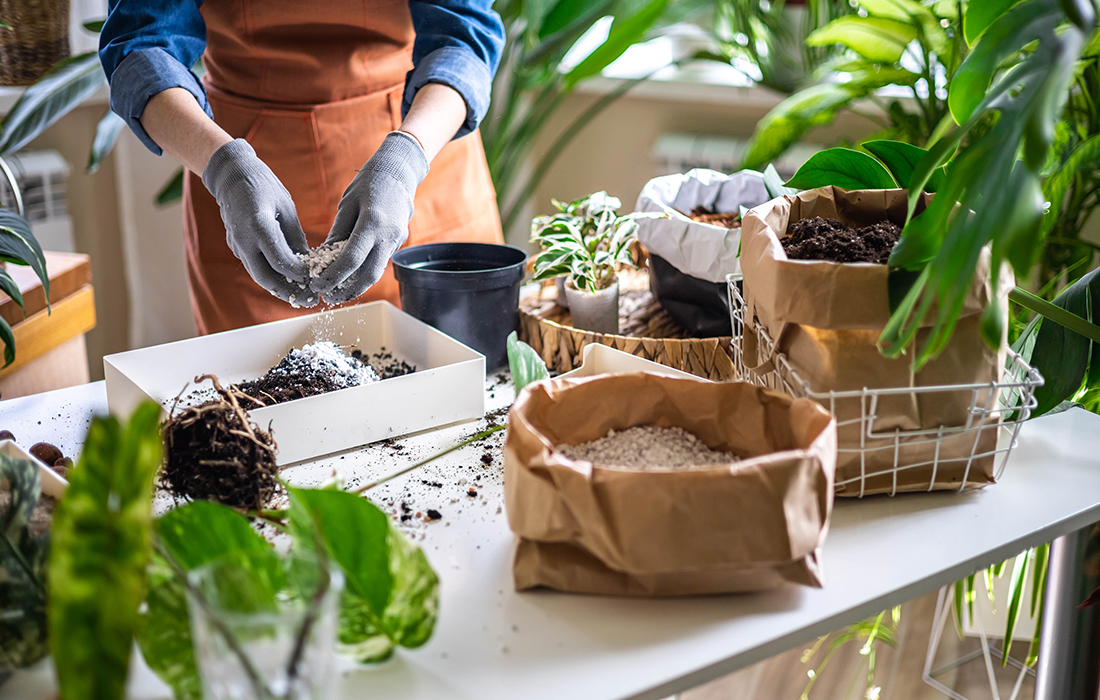The recipe for your green pet’s well-being is based on several ingredients—and soil composition is one of the main ones. Why learn about it when you could just buy a commercial potting mix? First of all, after you get acquainted with the basics of soil composition, you’ll be able to prepare the perfect growing medium for any plant. This practice will save you a ton of money, as ingredients are usually cheaper than a pre-made growing medium. Moreover, you can store and reuse the leftovers and directly control what goes into the mix.
In our article “Growing Media for Indoor Plants,” we’ve already covered everything you need to know about various soil components, and now we’ll focus on recipes. The first things you should keep in mind are the growing conditions your green pet is used to in the wild and those you can provide. All houseplants can be roughly divided into a few groups that have different physiological needs and require different potting mixes.
Aroids
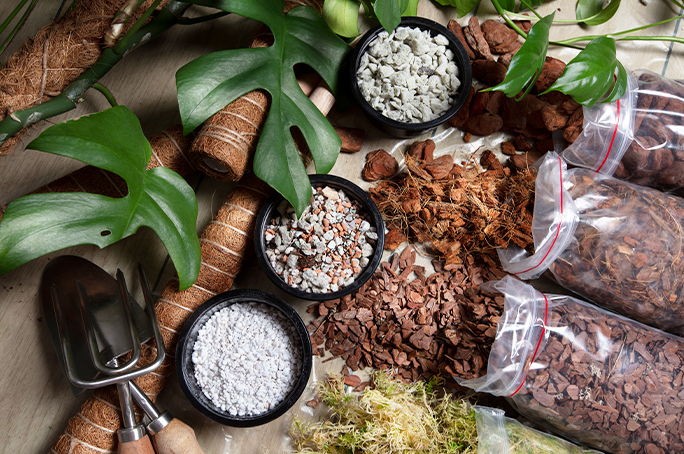
Spathiphyllum, Monstera, Philodendron, and Dieffenbachia are tropical plants used to warm and humid conditions. They need moisture-retaining and nutrient-rich yet loose and light soils. To prepare the perfect one, mix 3 parts peat, 2 parts perlite, 1 part vermiculite (biocompost), 1 part coconut coir, and 1 part sand. Aside from aroids, this neutral or slightly acidic growing medium will also suit other foliage plants.
Ferns

Used to an abundance of moisture, Asplenium, Nephrolepis, and Pteris have quite similar needs. Mix 4 parts peat, 1 part perlite, 1 part compost, and 1 part sand to get a moisture-retaining, nutrient-rich, and loose growing medium. If you’re growing your fern in a dry and warm place, you can help your green pet hold on to water for longer by adding some sphagnum moss or coconut coir to the mixture.
Orchids and Bromeliads
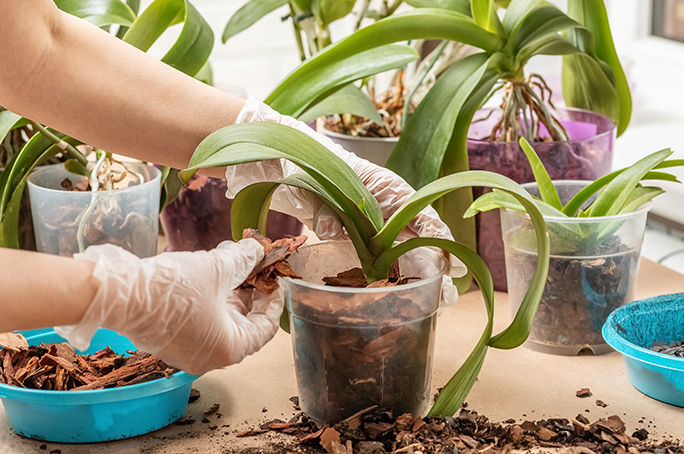
These plants are also tropical inhabitants, but they’re also epiphytes, which means that these beauties need a well-draining growing medium rather than a dense and fertile one. Thus, you need to go for 3 parts pine bark, 3 parts coconut coir, and 1 part perlite.
Leaf Succulents and Cacti
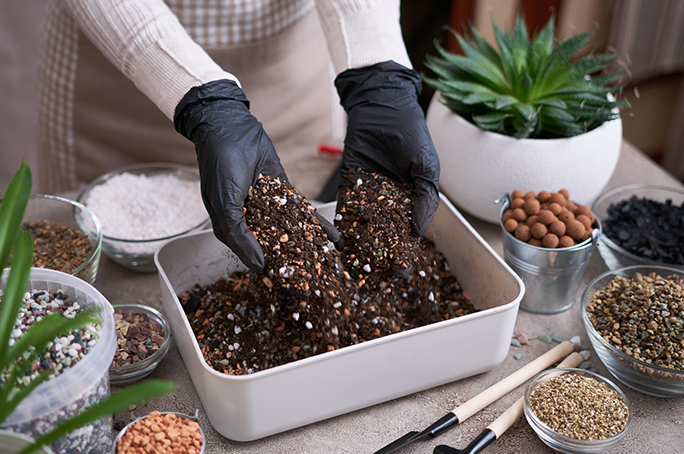
Adapted to an arid and hot climate, leaf succulents and cacti accumulate water in their fleshy leaves and stems and won’t thank you for extra moisture and nutrients. To help your green beauties thrive, you’ll need a growing medium that won’t promote waterlogging. For better drainage, use zeolite, perlite, and fine expanded clay or a mixture of crushed bricks and sand. You can also add purified pumice or lava rock. Make sure to follow the rule—the bigger the plant, the larger the fraction of the ingredients. However, if you aren’t sure, the optimal size is 0.1–0.2 in (2–5 mm).
Flowering Houseplants
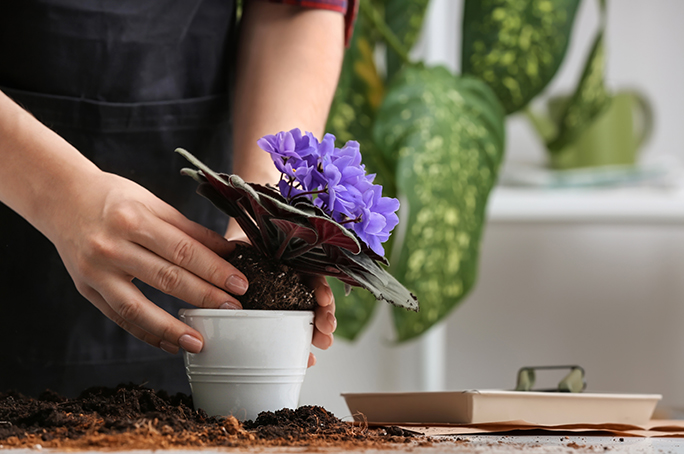
While too diverse for a universal recipe, the main soil requirement for any one of them is an abundance of nutrients. A good potting mix should also retain moisture well but be able to drain its excess. If you need something basic, go for 4 parts peat, 1 part perlite, 1 part compost, and 1 part sand with an addition of fertilizers. The best choice is NPK pellets that you need to mix into the soil or spread across the surface. However, make sure to adjust the dosage according to the instructions on the packaging to avoid fertilizer burn.
Bonus Tips
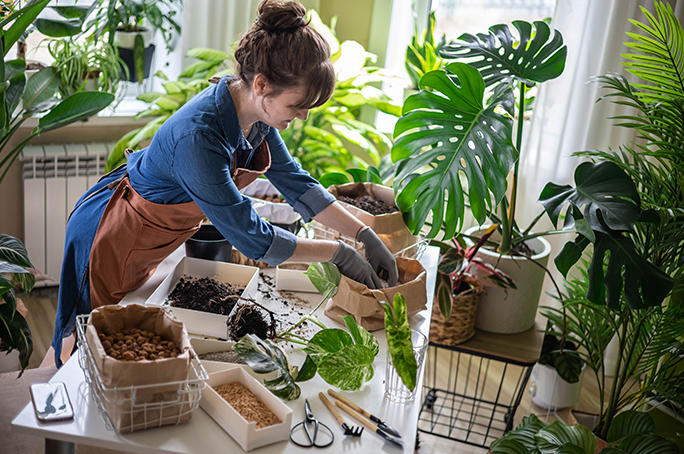
- Choose pots with drainage holes so that excess water can escape into a saucer, preventing waterlogging and root rot. Nevertheless, even the perfect growing medium can get soggy without proper drainage.
- Only buy ingredients at specialized stores or garden centers. Soil components brought from the streets can be infested with pests and contain disease pathogens.
- Be cautious and mind your safety. Use a mask and gloves while preparing a potting mix and don’t allow your kids and pets to eat the components. Fertilizer pellets are especially dangerous in this regard—they can look like colorful balls but can cause severe poisoning when ingested.
As you can see, all houseplants come from different places, and you need to pay attention to their specific needs. However, we hope you’ve got all your questions answered and will try your hand at creating a perfect soil mix for your green pets!
